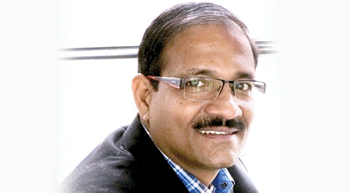
Our products are technologically way ahead
What is the demand-supply scenario for tower cranes for different capacity?
The market is picking up. The market demand for 5T-6T tower crane is about 350 units; while the demand for 8T-10T is about 30-40 units and 12T and above is 25-30 units a year. The overall size is 400-450 units with approximate value of Rs 3,000-3,300 million.
We have recently supplied 69 tower cranes to BG Shirke who was the manufacturer of Potain tower cranes in India for over 25 years. But BG Shirke selected GJJ as the best tower cranes for their precast building site. In one site alone in New Delhi there are 49 tower cranes working. These tower cranes can rotate 360o and can travel on rails. They have to complete 1,000 buildings in 27 months. So they need a trouble-free tower crane operations, for the time available is very short.
What is the range offered by Everest engineering?
We offer tower cranes in three ranges; in the small tower cranes (8T to 10T), GJJ is the best brand. In the above 10T to 50T capacity range we have the SYM brand. SYM is another world famous brand from China, with about 62 years of history. About 7,000 cranes are working around the world and 100s in India. These cranes are famous for use in projects such as cooling towers for they come with features such as easy rope anchorage and are self-dismantling. Finehope is another brand we have in the capacity range of 32T to 150T. We have about 25 tower cranes already working in India, at various power project sites.
Could you throw some light on the anti-collision devices that you showcased at bC India 2014?
These are systems required for the additional safety of tower cranes, which may sometimes collide with each other, in places where multiple units are working together. These anti-collision devices also prevent collision of the tower cranes with nearby buildings, electric posts, etc, too. This is a fully computerised system which can be radio controlled. Each tower crane can be fitted with one device and there will be a ground monitoring system. There are no wires, since the communication is done through radios. These radios are approved by the Ministry of Communication, for they have specified frequency and voltage. The device helps the tower cranes communicate with each other and can also view the complete functioning on the ground monitoring system.
To what extent you have factored the frequent power failure while designing these units?
We have done a lot of research and development (R&D), for about two years, in order to ensure that the device is perfectly suited to Indian conditions. For example, frequent power cut is a problem in India, and this can damage the memory or the hard disk. Our anti-collision devices are totally microprocessor based. Even in the case of 1,000 times power failure too, nothing will happen to the device. Moreover, there is also a Safe Load Indicator (SLI) inbuilt in this device. This is not the case so with others where you have to buy the SLI separately.
When it comes to higher capacity cranes, we are still dependent on import/and overseas players. What is your take on this?
On higher capacity cranes, we still have to gain knowledge in structural design calculations and development of each component and mechanism with prototype testing facility.
Which are the major demand drivers for tower cranes for different capacities?
We expect realty sector/high-rise buildings with a share of 75 per cent and in power/steel 5 per cent and prefab/cement with 20 per cent.
Brief us on the major trends with regard to safety.
We offer the highest standards of safety in accordance with European standards and will ensure to implement at site. Visibility from operator cabin and simplified operator consoles are the new features offered.
How do you assess the growth potential for tower cranes from the rental segment?
There was a tremendous growth in rental segment from 75-80 nos in 2010 to 350 nos in 2014. This segment will grow further to 600 nos by 2017.


 +91-22-24193000
+91-22-24193000 Subscriber@ASAPPinfoGlobal.com
Subscriber@ASAPPinfoGlobal.com